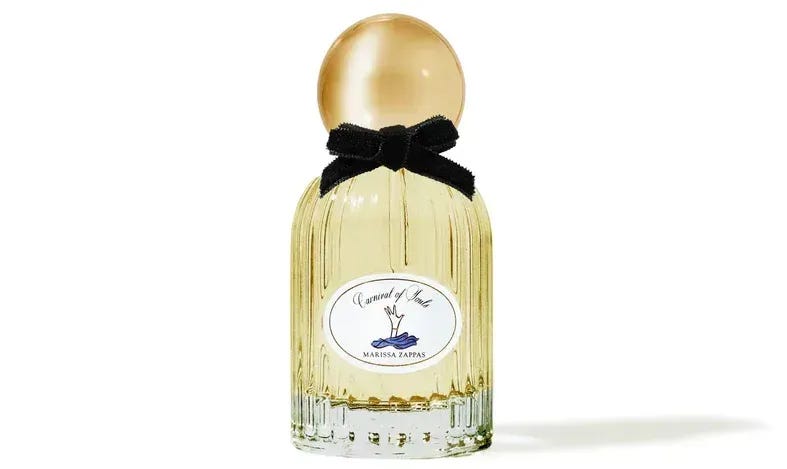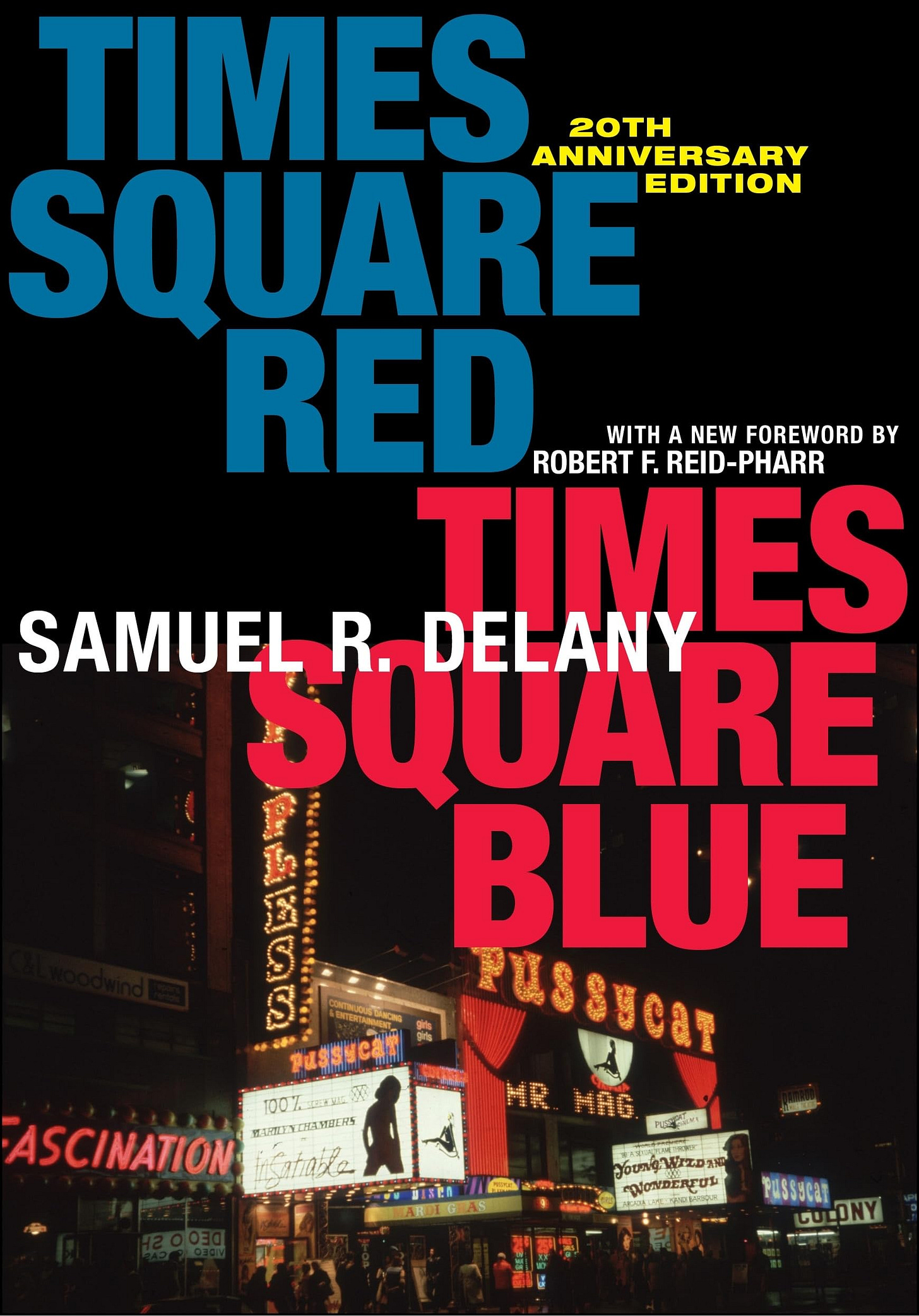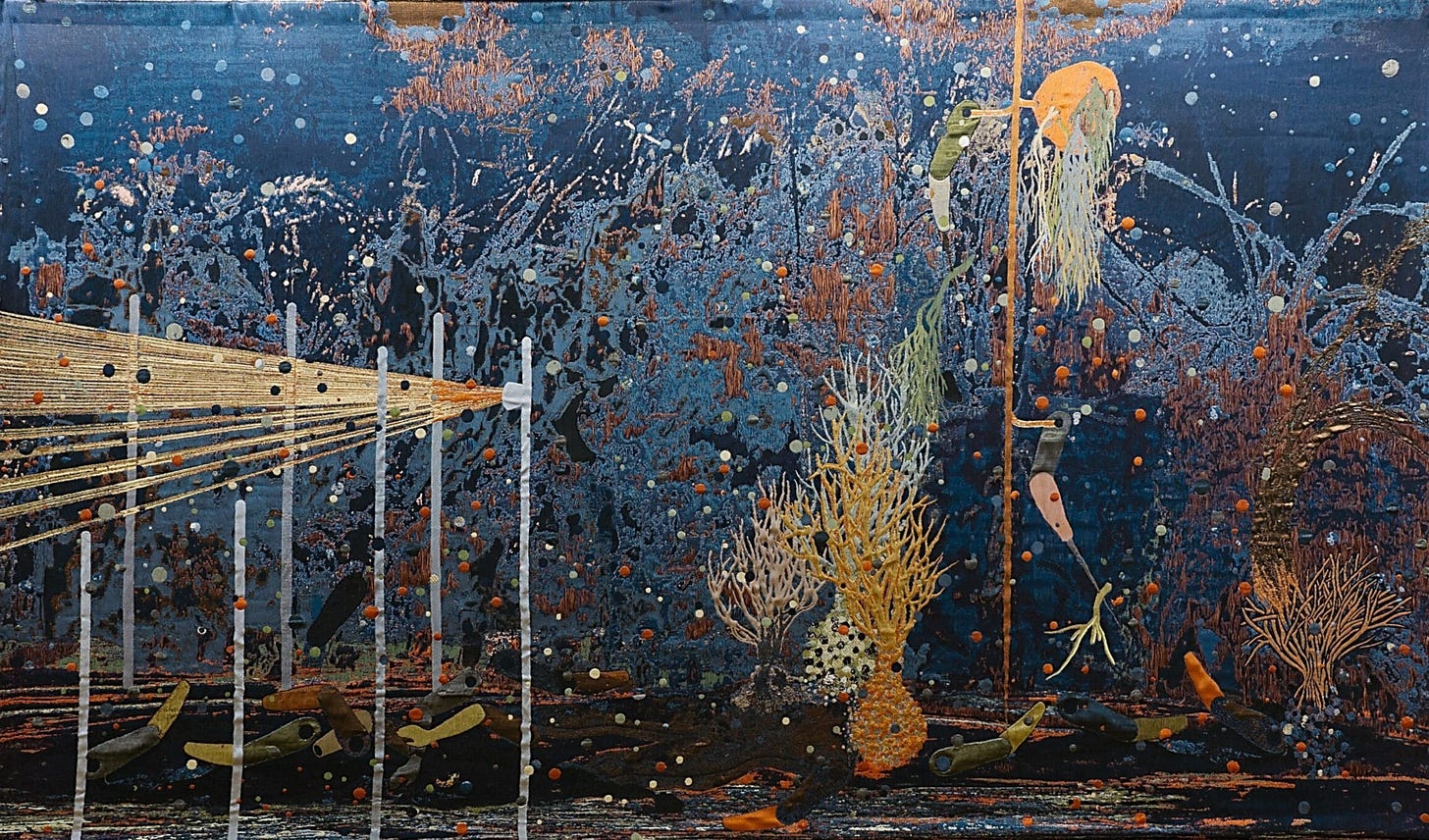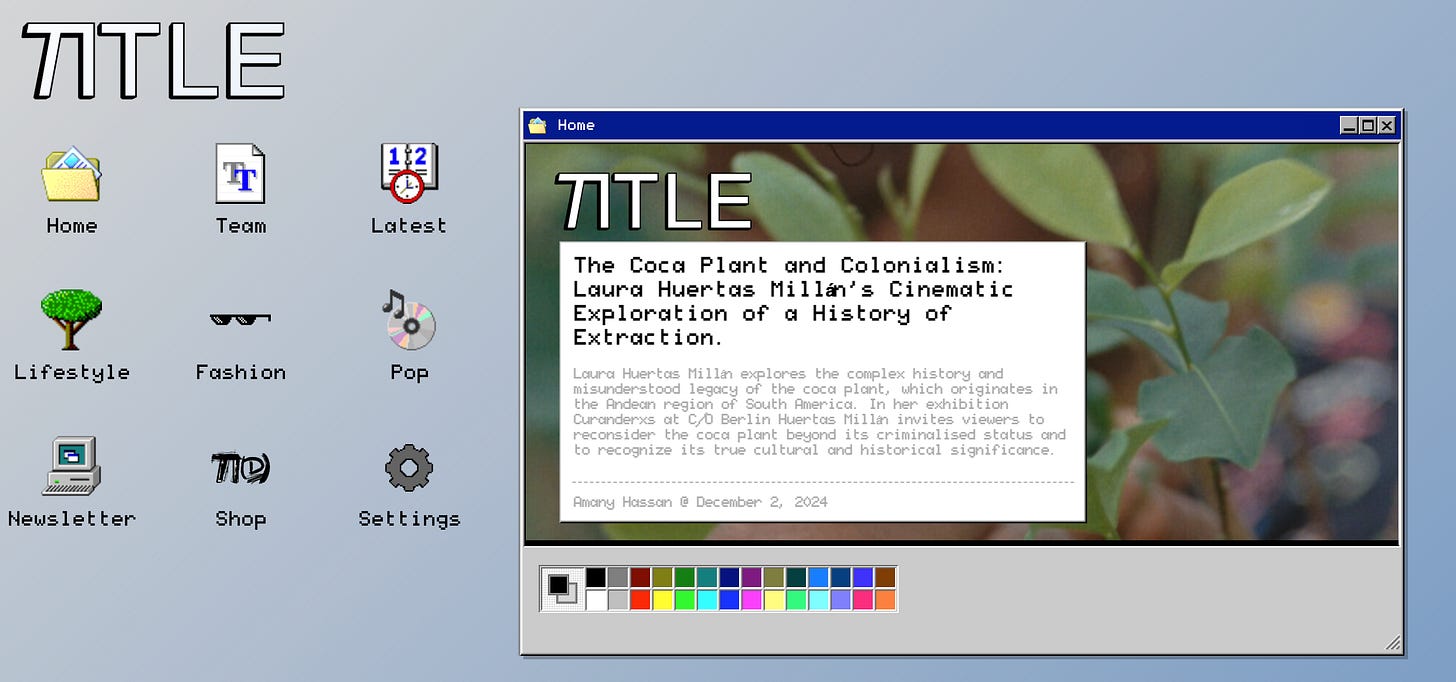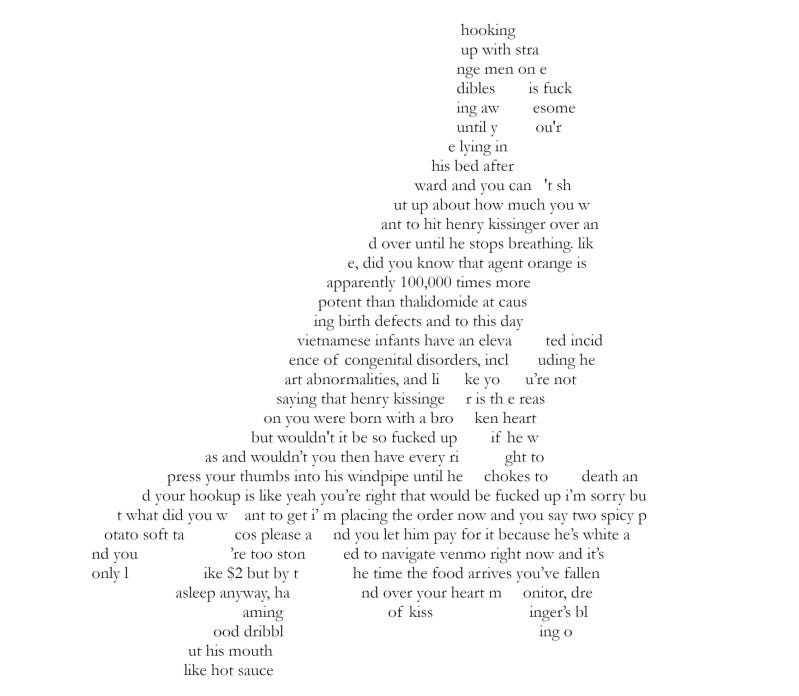66. Micro Reliquary IX
What's keeping me sane and entertained during this chaotic holiday season
Hello friends,
The year’s end has become an absolute whirlwind. I’m wrapping up the first few months as a fellow at the Architectural League of New York and Urban Design Forum, in the midst of finishing my PhD applications, and have had freelance gigs galore keeping me occupied ahead of the holidays.
Now that I’m back in Florida defrosting for a little bit before I go back to the gray slush of New York, I thought I’d give you a little present of my own: a shortlist of the things that have kept me sane and entertained during this chaotic holiday season.
TOUCH
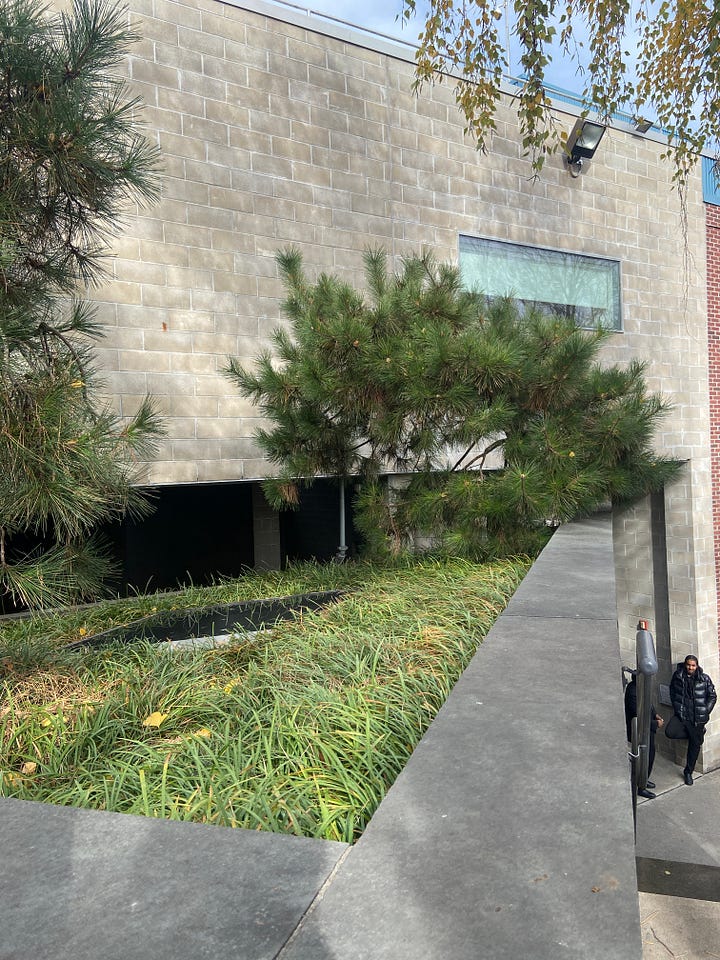
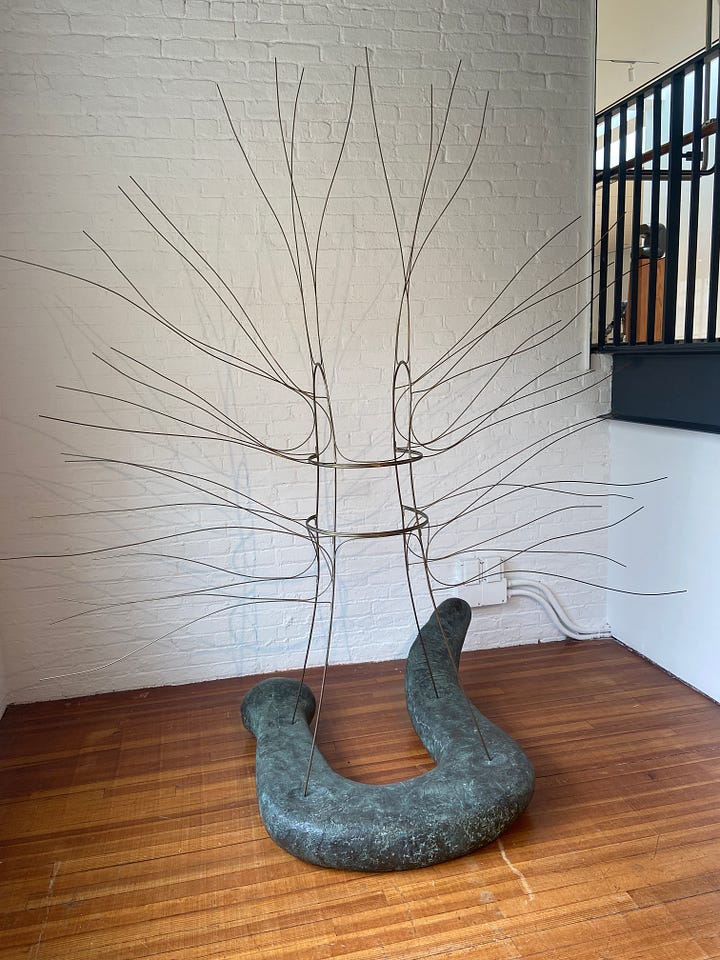
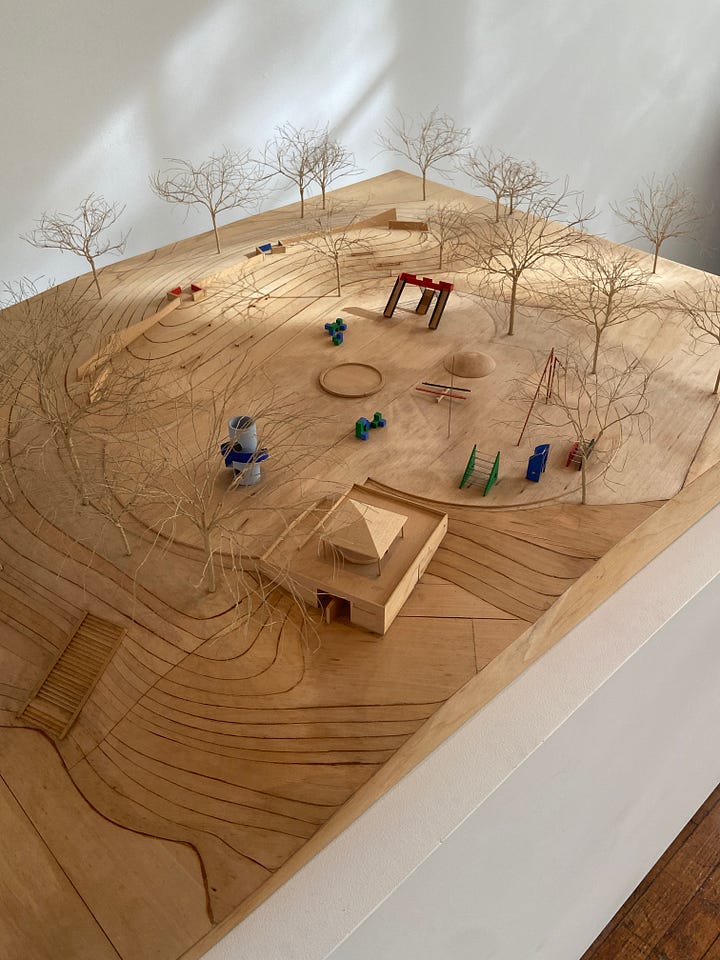
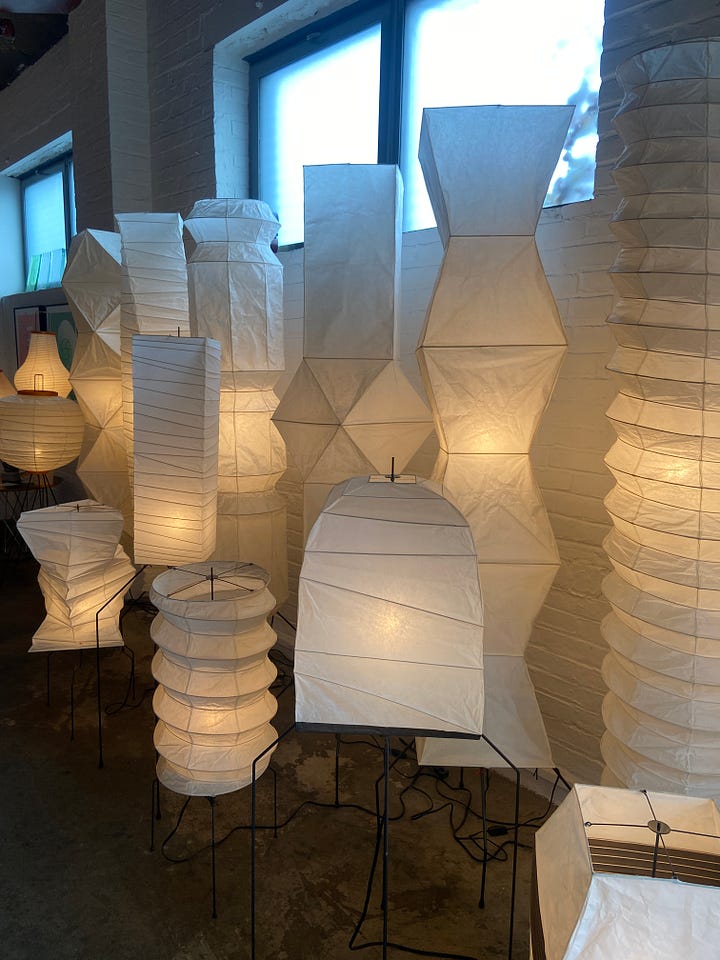
Back in November, I went with a friend to the Noguchi Museum in Queens. This is a criminally underrated museum, located in an old industrial building across the street from Isamu Noguchi’s former Long Island City studio. Its design—a mix of open-air galleries, sculpture garden, and indoor exhibition spaces—reflects the principles of organic geometry seen in Noguchi’s work. You can spend a whole contemplative afternoon meandering around and studying his sculptures. Some highlights from this visit? A wearable Spider Dress for Martha Graham’s 1946 production of Cave of the Heart and a model of Noguchi’s 1976 Playscape designed for Atlanta’s Piedmont Park.
Carnival of Souls by Marissa Zappas has become a beloved winter scent for me. A blend of mimosa, incense, saffron, and amber, it has a ghostly vintage feel that’s like a velvet dressing gown drawn over a translucent white night gown. Inspired by the 1962 horror movie of the same name, the perfume’s coconut note adds an unexpectedly cozy, warm softness to New York City’s dreariest days.
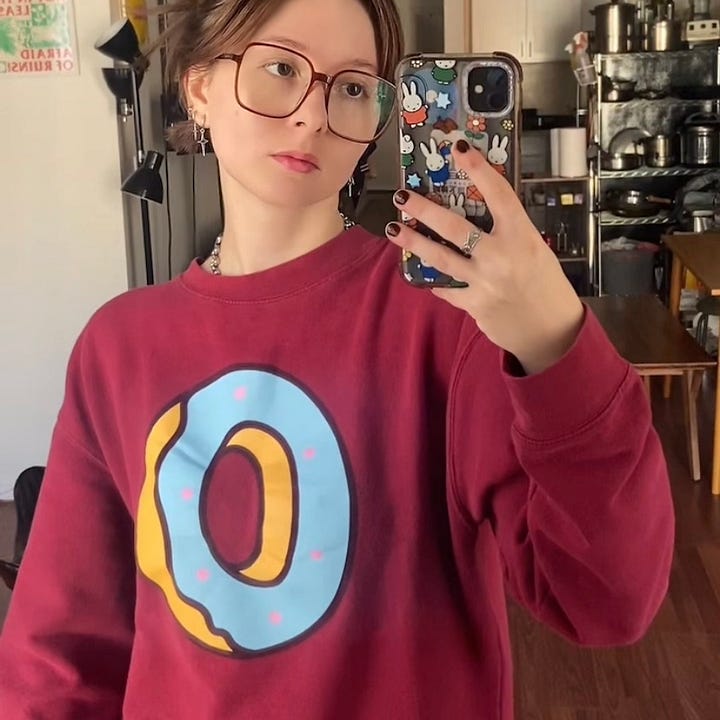
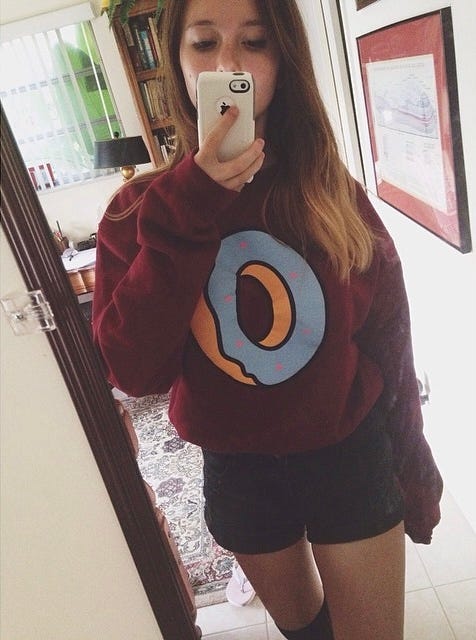
Lately, I’ve been in the mood for nostalgia dressing. Doesn’t help that every young Gen Alpha and Z on TikTok is obsessed with romanticizing the mid-2000s. After Tyler the Creator dropped his newest album, I became obsessed with tracking down an old Odd Future sweatshirt from my Huf socks Tumblr aesthetic days. I managed to track down the exact style I used to have on eBay and it felt like reuniting with an old friend. Highly recommend returning to the corny style of your teens.
I’m embarrassed to admit I hadn’t read Samuel R. Delany’s Times Square Red, Times Square Blue until it was assigned to us by author Carina del Valle Schorske for one of our fellowship meetings. Over two long essays, Delaney documents the disappearing porn theaters of 42nd Street and the patrons who frequented them. This book breaks every rule of journalistic observation, with Delaney regularly paying for sex and buying meals for his interviewees. By refusing objectivity, Delaney presents the dynamics of these marginalized spaces and his gay subjects with great care, depicting these theaters as sites for cross-cultural encounters and communal pleasure for men of all races, classes, and sexual identities. Knowing these theaters’ ultimate fate (death by gentrification), this book is a reminder to preserve queer urban histories.
LOOK
I’ve been thinking about Caleb Hahne Quintana’s paintings since I saw his piece Moments Where We Met at the High Museum. Quintana renders his subjects in hues reminiscent of dusk and sunset: soft blurs of pinks, oranges, and blues from those moments at the edge of darkness. Tender portraits often staged in vast deserts and mountainous landscapes, Quintana explores his upbringing in the Southwest and seeks to reclaim his Mexican heritage by challenging the Americanization his family endured during their migration. His scenes are nostalgic, ethereal, and subversive, with mundane memories and images of cowboy iconography rendered through a dream-like glowing haze that’s deeply sensual and marvelously transcendent.

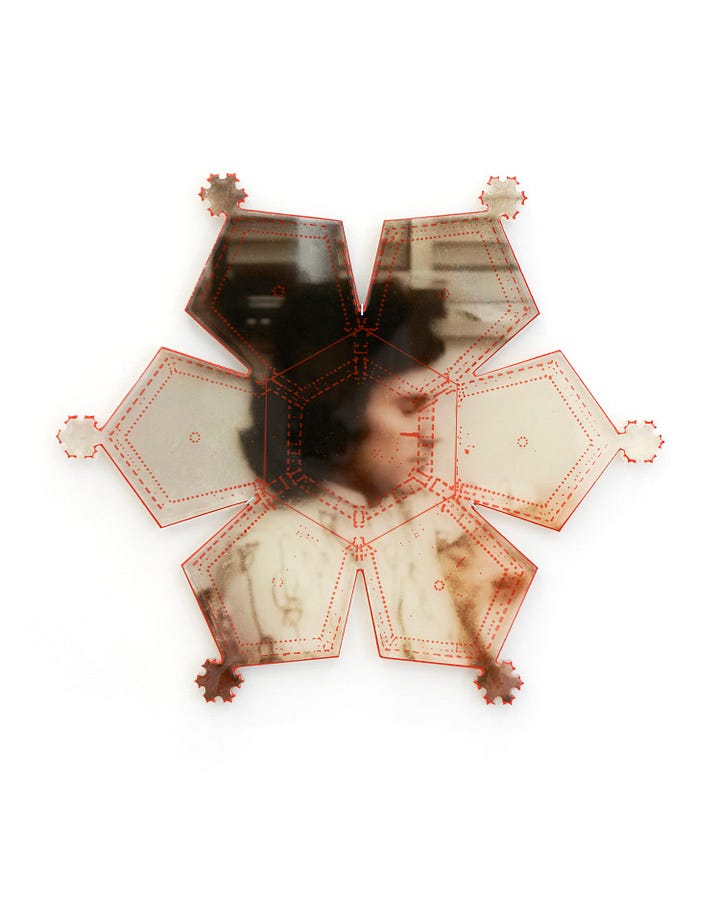
Nina Hartmann’s work refracts archival imagery through a diagram-like geometry. Printed on wood panels, vinyl, and resin, Hartmann poetically connects images and their cultural and political meanings, reconfiguring iconographic structures of critical theory, graphic design, and mysticism through works that blur the lines between painting and sculpture. As Hartmann puts it: “Some of the ones I’ve been most interested in are repetition, allure, mysticism, redaction, suppression, and disinformation. Like how does a beautiful and seductive object affect your consideration of its legitimacy or authority? What about its composition, the quality of the photo, the colors, its level of obfuscation, and the quality of the object?”
You wouldn’t know it by just looking at photos, but Otobong Nkanga’s monumental 2021 tapestry Tied To The Other Side immerses you in its elaborately woven landscape. Her colorful, shimmering threads of gold and deep blue evoke the depths of the ocean or the celestial night sky, evoking ecological cycles of life, regeneration, and decay as your eyes move from right to left across her scene of dense vegetation. Nkanga places viewers in this moment of pure energy, drawing on humanity’s long and complicated relationship to the natural world. As she told MoMA: “Everything comes from nature.”
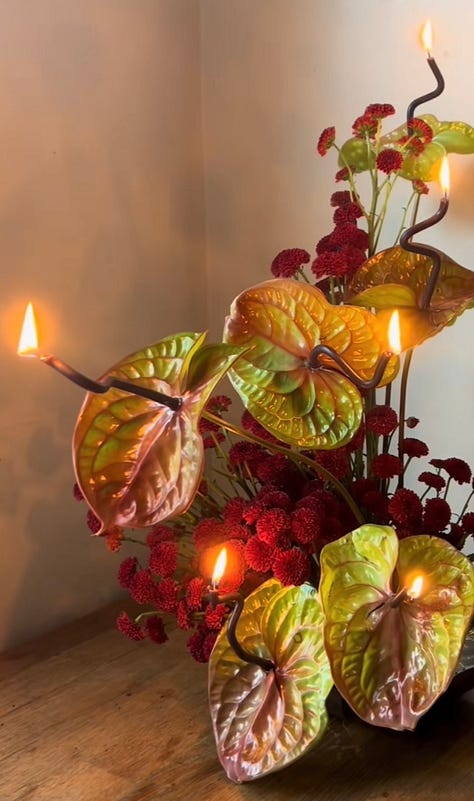
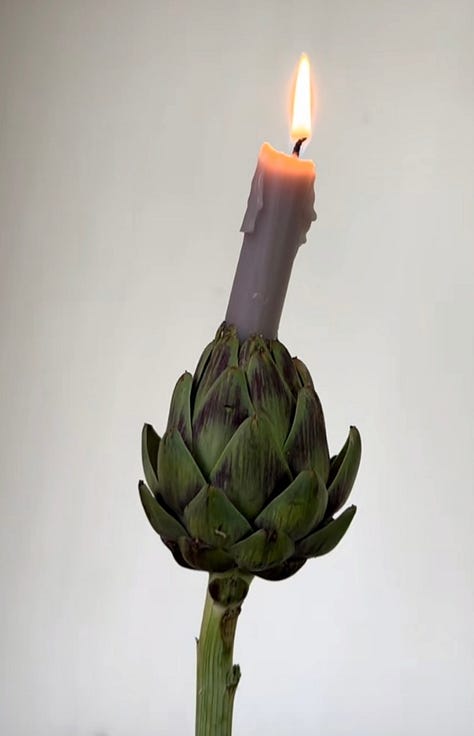
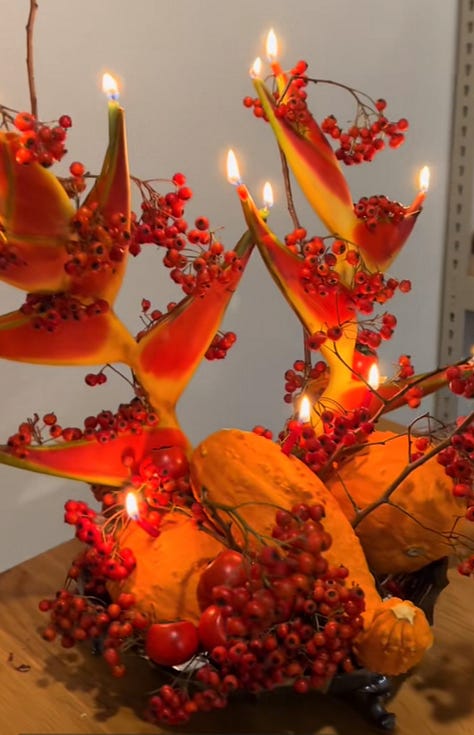
Cody Schulund, floral director of Fresh Cut Flowers, has been putting candles into his floral arrangements lately. I love the juxtaposition between their organic blooms and the flickering flames, especially on the videos Schulund posts on TikTok of their melting wax and elaborate sculptural presentations. That’s the beauty of floral design: elaborate botanical constructions designed for ephemeral enjoyment.
LISTEN
In the midst of my own academic career quarter life crisis. I’ve really enjoyed making my way through the Ologies archive. Hosted by science communicator Alie Ward, each episode features an interview with a expert about the subject they’re most passionate about. This show is a reminder that no scholarly niche is too small or boring, and that there’s always more for us to learn about the world by sharing what we know and speaking with one another. Don’t know where to start? I’ve personally enjoyed “Experimental Archeology” with Angelo Robledo, “Teratology” with Dr. W. Scott Poole, “Detroitology” with Aaron Foley, and “Bryology” with Robin Wall Kimmerer.
From the moment I first listened to “Jerkin’,” I knew I was going to be a fan of Amyl and the Sniffers. Hailing from Melbourne, this band has a brash punk rock song with punchy feminist lyrics to match. Each electrifying tune (see also “Chewing Gum” and “Motorbike Song”) is a glorious middle finger to the world.
For her NTS radio show Soup To Nuts, host Anu created a special episode dedicated to the late and great Ryuichi Sakamoto. This is a thoughtfully curated, touching tribute, condensing his decades-long career into a 2-hour medley of his compositions and experiments intercut with interview clips. There’s something so playful yet also deeply intimate about this mix, taking us through the polyrhythmic layering of texture and tension in electronic and acoustic sound that came to define his vibrant musical work.
Although I haven’t had time to finish watching the League of Legends show Arcane, I can’t stop listening to their soundtrack for Season 2. These are catchy songs that thrust you into the techno-political tumultuousness of this world and its cast of spirited, destructive characters. The artists on this track list include gems from Stromae, Woodkid, and Ashnikko. Great for some heroic daydreaming escapism.
LICK
Dune: Prophecy is one of those “if you know, you know” sleeper hit shows. This story takes place 10,000 years before the birth of Paul Atreides as the burgeoning Bene Gesserit seeks to expand their knowledge and authority in the Imperium. Leading the order is Valya Harkonnen, who has gone from suffering in exile with her family to a powerful political player with a superhuman knack for strategic manipulation. Along with her sister Tula (another fascinating character in her own right), we watch as their motto “Sisterhood above all” gets tested through ideological divides, murder, betrayal, and sandworm-induced sorcery. A slow start, but well worth the six-episode watch.
One publication on my radar lately has been Title, a Berlin-based magazine covering fashion, art, music, and culture. I was drawn in by their retro website design and love the thoughtful curation that goes into the release of each creative essay and trend think piece. It’s a reminder that criticism doesn’t have to be pretentious and boring.
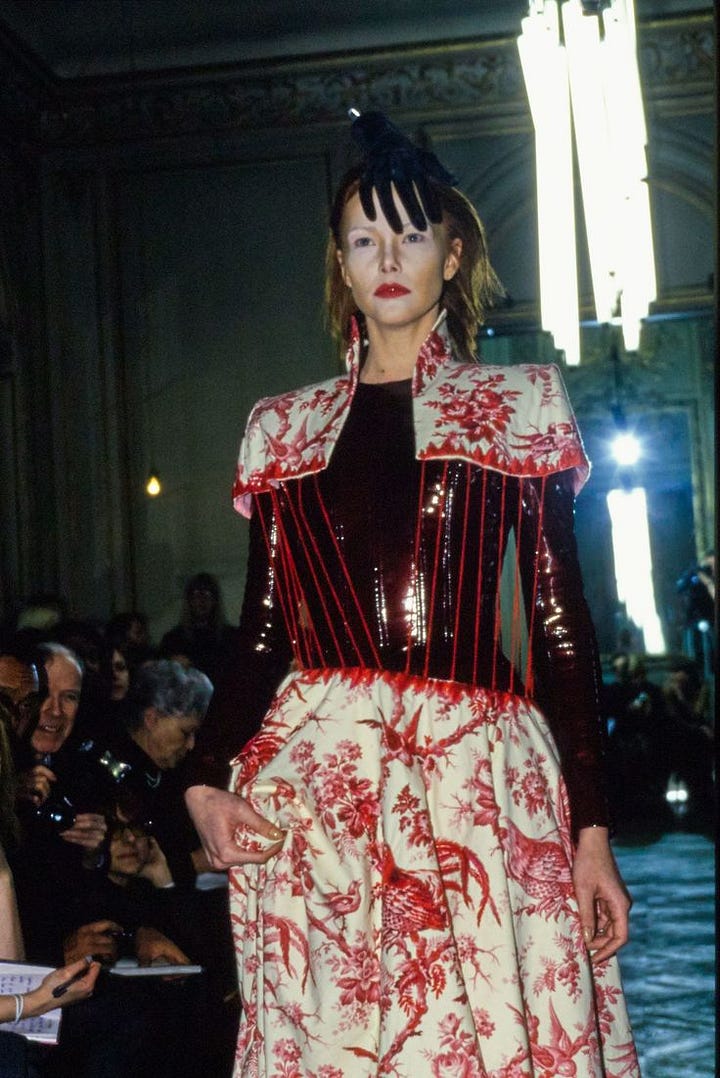

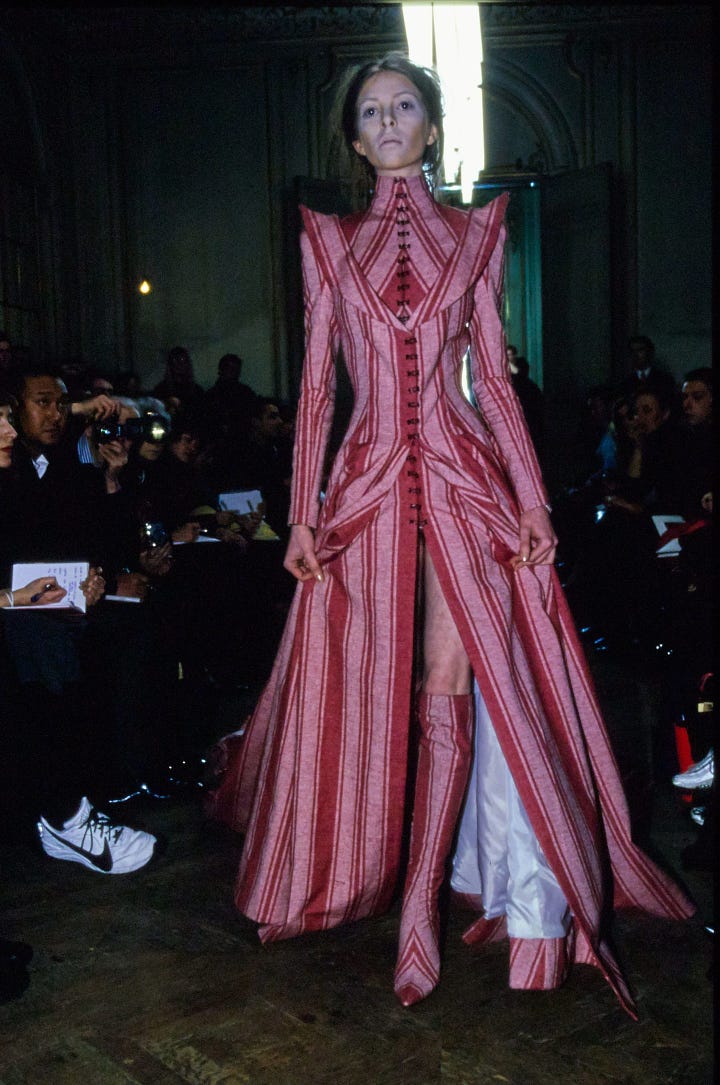
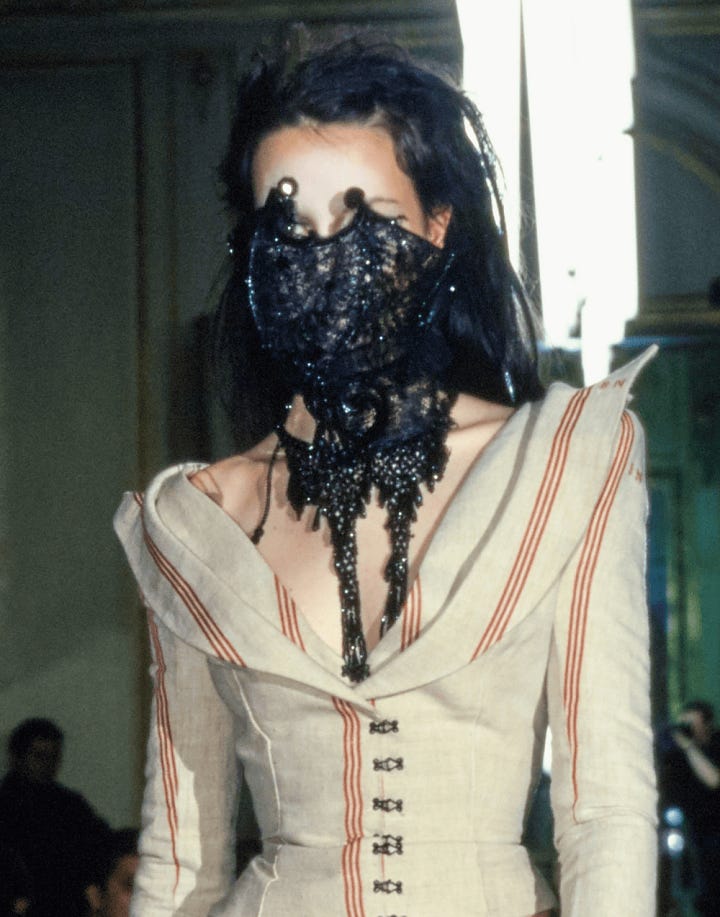
Maybe it’s the weather that’s gotten me in a gothic mood, but I’ve loved revisiting Olivier Theyskens’s 1998 Fall RTW collection. Blending rich velvets, leathers, and antique lace, Theyskens sent models down the runway with veiled faces, embroidery that mimicked veins, pointed shoulder pads, and high necklines. Accompanied by a soundtrack featuring famous women from cinema screaming and breathing and over-powdered makeup punctuated by bright red lips, the effect was otherworldly vampiric.
CLICK
Like many of you, I saw Wicked earlier this month. Like many of you, I also read “How Does My Divorce Make You Feel?” authored by Dr. Lilly Jay, the ex-wife of movie cast member Ethan Slater. In it, Jay recounts the breakdown of her marriage during her harrowing pregnancy and her new unwanted visibility due to Slater’s on-set affair with costar Ariana Grande. In a situation that’s been plagued by speculation for months, Jay chooses not to play into celebrity gossip, opting instead to focus on her experience as a mental health professional blindsided by a sudden divorce and inescapable movie promotion featuring her ex’s mistress. Jay grapples with losing one’s privacy, realizing your high school sweetheart was no longer the man you married, and finding peace and comfort in her newborn son. I’ve been ruminating on this particular passage: “Some of what you loved most about your partner was actually your own goodness reflected back to you; it’s yours to keep and carry forward.”
I’ll end with a piece fitting for my mood during this current political climate: “Poem in the Shape of the Poet Beating Henry Kissinger to Death with Their Bare Hands.” Its title comes from Anthony Bourdain writing about his experience visiting Cambodia. I love how the poem’s form literally mimics this act of fury and outrage, mirrored by the actual content of its text. In a time when we continue to bear witness to violence (ongoing, intergenerational, systemic, inescapable), it’s okay to sit in those feelings of anger, talk about it, and turn it into actions of solidarity and resistance.




